Squats can be done using only your bodyweight on a flat surface. You can also add resistance with dumbbells, use elevated surfaces, try single-leg variations, and add movements, among other variations.
Squats are one of the most popular exercises, and for good reason. They can help increase your overall strength, balance, and mobility, as well as prevent injuries and make everyday activities easier.
Keep reading to learn more about 45 squat variations to keep things interesting.
These squats don’t require any equipment or added resistance — just your body weight.
1. Basic squat
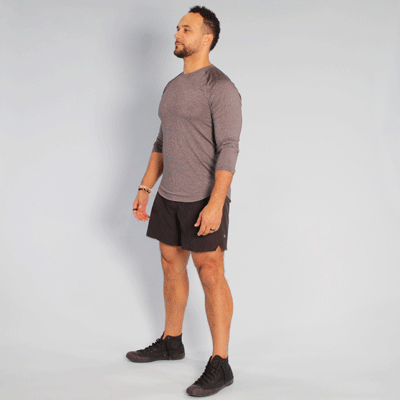
This is the foundational squat movement. Once you master this movement, you’ll be in great shape as you work your way through this list.
- Start with your feet shoulder-width apart, toes slightly out, and your arms down at your side.
- Start to hinge at the hips and bend your knees, sitting back like you’re going to sit down. Ensure that your knees don’t fall inward and your back stays straight.
- When your thighs are parallel to the ground, stop and push up through your heels to return to start.
2. Wall squat
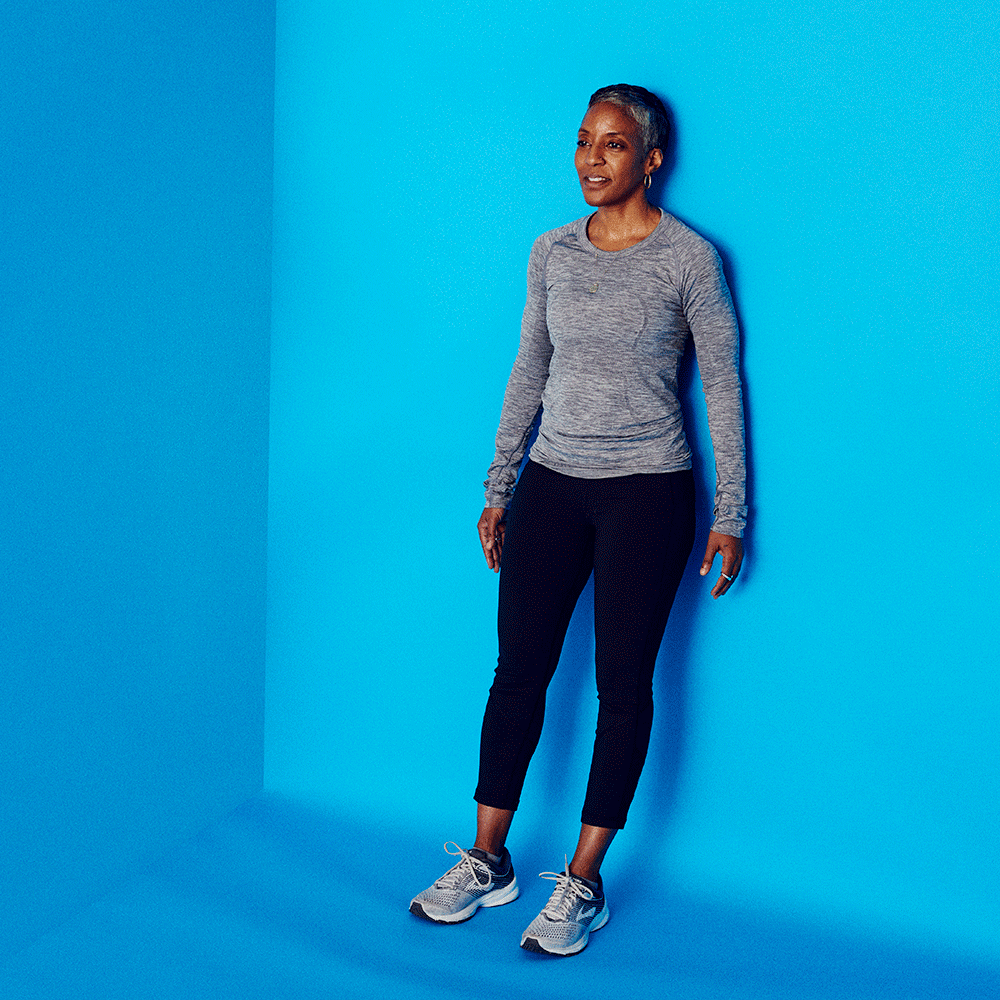
If you have knee or hip problems, a wall squat can provide extra support.
- Stand with your back against a wall and step your feet out about 12 inches from the wall.
- Bend your knees, dropping into a squat while keeping your back pinned to the wall throughout the movement.
- Stop when your thighs are parallel to the ground. Push up through your heels back to start.
3. Prisoner squat
Putting your hands behind your head can help stabilize your core and shoulders.
- Start with your feet shoulder-width apart, toes slightly out, arms bent, and fingers interlaced behind your head.
- Proceed with a basic squat.
4. Side squat
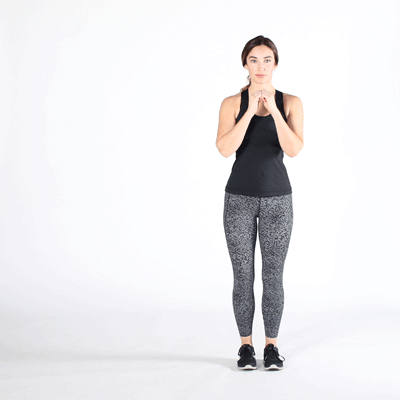
It’s important to work in all planes of motion while exercising, including moving side to side.
- Start with your feet shoulder-width apart and your arms down at your sides.
- Begin to hinge at the hips and bend your knees, stepping your right foot out to the side and allowing your arms to raise up in front of you to a comfortable position.
- When your thighs are parallel to the ground, stand up, stepping your left foot to meet your right.
- Repeat, stepping your left foot out and bringing your right foot to meet it.
5. Pistol squat
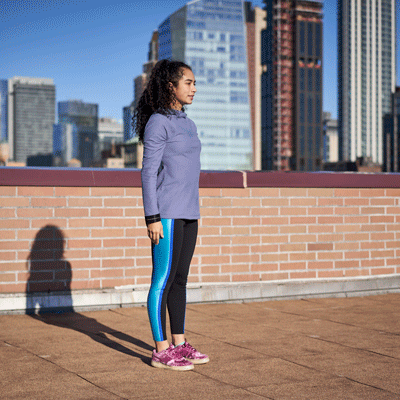
A more advanced move, a pistol squat is a single-leg bodyweight squat that requires strength, balance, and mobility.
- Start standing with your feet together and extend your arms out in front of you.
- Lift your left leg up off the floor in front of you and squat down on your right, lowering until your left leg is parallel to the floor.
- Stand up and repeat on the other side.
6. Single-leg squat
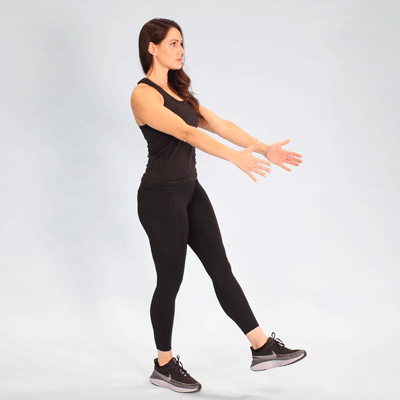
Not to be confused with a pistol squat, a single-leg squat is a squat on one leg. The main difference is that in a single-leg squat, the free leg doesn’t have to be parallel to the ground.
- Start by standing with your feet together and your arms out in front of you.
- Lift your left leg up off the ground in front of you and squat down on your right as far as you can go, stopping when your right thigh is parallel to the ground.
- Stand up, then switch legs.
7. Plié squat
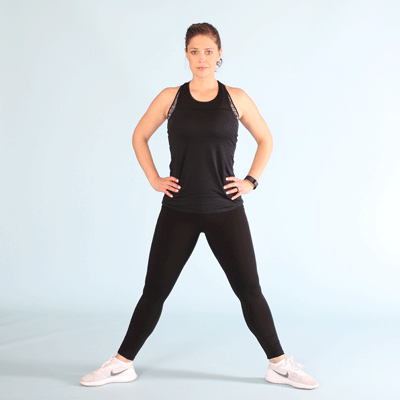
Channel your inner ballet star with a plié squat. It’s great for targeting your hips, too.
- Start with your feet wider than shoulder-width apart, toes pointed out.
- Bend your knees, dropping until your thighs are parallel to the ground, or as far as you can go. Keep your chest up throughout the movement.
- Push through your heels to return to the start.
8. Plié squat with foot drag
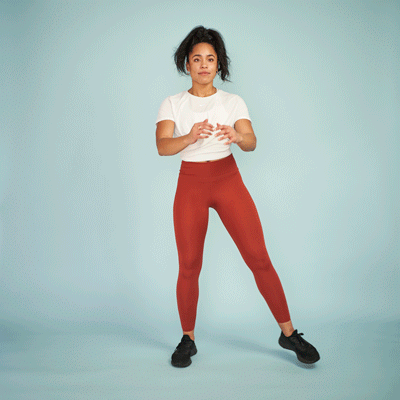
- Start by doing a plié squat. As you come back up, drag your right foot on the ground to meet your left leg.
- Step your left foot out wide, plié squat, then drag your left foot to meet your right.
9. Squat with knee drive
- Drop down into a basic squat.
- As you come up, drive your right knee up as high as it will go.
- Bring your leg down and drop immediately down again to another basic squat, pushing up and driving your left knee up this time.
10. Side-kick squat
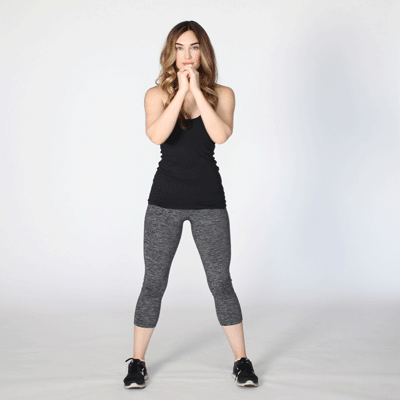
Adding a kick to your squats takes them from strength to cardio in no time.
- Drop down into a basic squat.
- As you come up, kick your right leg up as high as it will go.
- Drop immediately down again to another basic squat, pushing up and kicking your left leg up.
11. Split squat
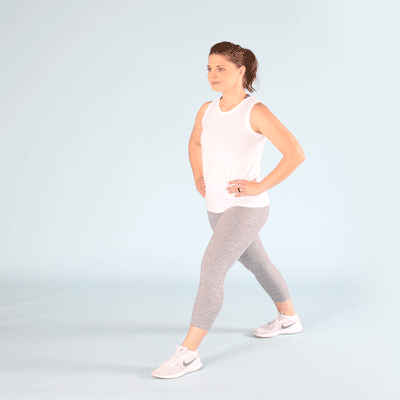
- Stagger your stance so your right foot is in front of your left.
- Perform a squat, dropping down until your right thigh is parallel to the ground.
- Stand and switch your stance.
12. Close-stance squat
Bringing your feet closer together gives your quads an extra workout.
- Start standing with your feet in a close stance, toes pointed straight ahead.
- Hinge at your hips and sit back into a squat, ensuring that your knees don’t cave in. Stand up when your thighs are parallel to the ground.
13. Lateral squat walk
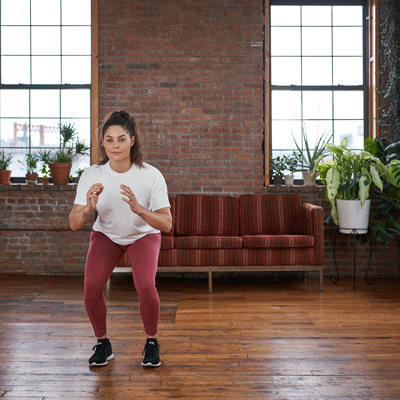
- Complete a side squat, but instead of stepping back to center, continue moving in one direction.
- Repeat the same number of steps on the other side.
14. Curtsy squat
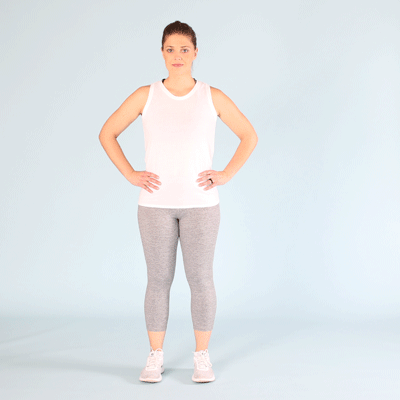
This variation gives some extra attention to your glutes.
- Start with your feet shoulder-width apart, hands on your hips.
- Step your right leg back, crossing it behind your left, like you’re curtsying, bending your left leg and stopping when your thigh is parallel to the ground.
- Return to the start and complete with your opposite leg.
15. Kneeling squat
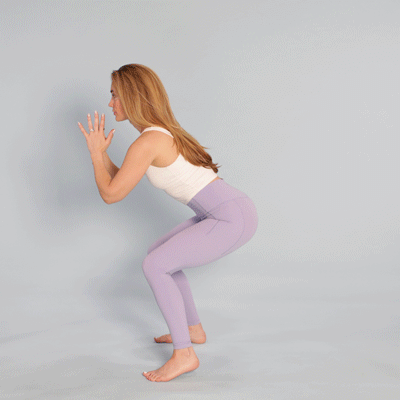
Feel the burn with a knee squat, which increases time under tension — or the length of time the muscle is working.
- Go down into a basic squat.
- Drop your left knee and then your right knee down on the ground so that you’re kneeling.
- Bring your left leg back up and your right leg up so that you’re back in a squat position.
- Instead of coming back up to the start, repeat the movement.
16. Frog squats
- Drop down into a basic squat.
- Place your elbows inside your knees, clasping your hands together.
- Keeping your elbows where they are, slowly start to straighten your legs, pushing your hips up in the air, then lower back down.
17. Squat pulse
- Drop down into a basic squat.
- Instead of fully extending back up to the start, rise up halfway, then drop back down again.
18. Squat jacks
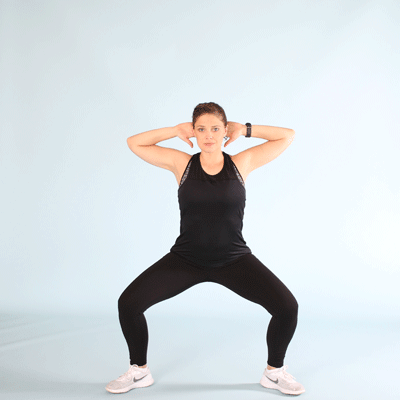
- Drop down into a basic squat with your arms behind your head.
- Jump your feet out and back in, maintaining a squat position.
19. Squat with kickback
- Drop down into a basic squat.
- As you come up, lift your right foot off the ground, squeezing your glute and kicking your leg back behind you. Ensure that your hips stay square to the ground.
- Lower your foot back to the ground, squat down again, and kick your left leg behind.
By adding dumbbells, a barbell, or a kettlebell to your squats, you’ll challenge yourself with more resistance.
Resistance training could further help increase muscle mass, strength, and joint health while preventing conditions like sarcopenia, heart disease, and arthritis.
20. Overhead squat
An overhead squat with a weight held above your head requires more stability, mobility, and flexibility than a basic squat.
- Stand with your feet wider than shoulder-width apart, toes pointed out. Hold a barbell, dumbbell, or ball over your head with a wide grip.
- Keeping your chest and head up, sit back into your hips, letting your thighs go just past parallel to the ground.
- Drive through your heels to return to the start.
21. Landmine squat
This variation uses a landmine machine, which you can find in many gyms.
- Put the bar into a corner or a landmine station and load it with the desired amount of weight.
- Stand in front of the weighted end, holding it with both hands at chest level, and squat down.
- Push up through your heels, keeping your chest up throughout.
22. Barbell back squats
- Load a barbell onto your shoulders.
- Complete a basic squat.
23. Dumbbell squat
- Hold a dumbbell in each hand and raise them so that they’re resting on the front of your shoulders.
- Complete a basic squat.
- Keep your chest open and your head up.
24. Front squat
Because you’re holding a weight in front of you for this variation, your core goes into overdrive. Your upper back must work to maintain good posture, and your quads experience a higher load.
- Load a barbell onto your front side, resting it on the front of your shoulders, crossing your arms, and gripping the bar.
- Drop down into a basic squat.
25. Goblet squat
Similar to a front squat, your anterior chain — or the front of your body — is doing most of the work in a goblet squat. The bottom position is also pretty natural and easy for most people to achieve.
- Hold a dumbbell or kettlebell close to your chest with your feet slightly wider than shoulder-width apart and toes pointed slightly out.
- Keeping your chest and head up, bend your knees until your hamstrings touch your calves. Stand up.
26. Zercher squat
Another front-loaded squat, the Zercher squat isn’t for the faint of heart, as it requires holding the weight in the crook of your elbow.
Research suggests that it engages your quads and back muscles more than other squat variations, such as the hack squat and sumo squat.
- Hold the barbell in the crook of your elbow with your palms facing you.
- Drop down into a basic squat.
27. Bulgarian split squat
This single-leg variation forces you to really engage your core and glutes. Complete this move by holding a dumbbell in each hand or loading a barbell on your back.
- Position yourself in front of a bench with a split stance, resting your left foot up on the bench. Your right foot should be far enough out to comfortably squat down without your knee falling over your toes.
- Keeping your chest open, squat down on your right leg, pushing back up through your heel.
- Stand up and perform on the other side.
Plyometric exercises involve explosive movements that require your muscles to exert maximum force in a very short amount of time. They could help improve your speed, power, strength, reflexes, and mobility.
If you’re new to working out or have any kind of injury, consider holding off on these moves. They can be rough on your joints.
28. Jump squat
- Assume a basic squat position. Drop down, and on the way up, explode up through your toes into a jump.
- Land softly, immediately dropping back down and exploding back up again.
29. Jump squat on toes
This variation is a little easier on your knees and ankles.
- Assume a jump squat position.
- Instead of leaving the ground on the up, just rise up onto your toes.
30. Weighted jump squat
- Hold a light dumbbell in both hands.
- Complete a standard jump squat.
31. Pop squat
- Start with your feet together and your arms at your side.
- Bend your knees and bring your arms in front of you, bending at the elbow.
- Rise and “pop” up, landing your feet out wide, allowing a slight bend in your knee, then immediately jumping back to the middle with your feet.
- Rise and pop up again.
Equipment like benches, boxes, yoga balls, and bands can help you perfect your form while giving you some added resistance.
32. Wall squat on yoga ball
- Do a wall squat, but place an exercise ball between you and the wall.
- Roll down the ball as you lower your body.
33. Box or bench squat
If you’re new to squats, a bench squat is a good way to push yourself a little lower.
- Position yourself in front of a bench or a box so you touch it lightly when you sit down into a squat.
- Do a basic squat, lowering until your bottom touches the seat, then stand back up.
Consider adding resistance by using dumbbells, bands, or a barbell.
34. Mini band squat
Proper squat form entails keeping your knees out, but it’s common to see knees caving in, which may be a sign of weak glutes.
Using a mini band forces you to avoid this mistake.
- Place a mini band above your knees, assuming the stance for a basic squat.
- Execute a basic squat, ensuring that you’re pushing your thighs out against the bands.
35. Sissy squat
You can do a version of a sissy squat just using a plate, but it’ll be easier with a sissy squat machine — that’s what we’ll explain here.
- Position yourself in the sissy squat machine so you’re standing with your calves against the large pad and your feet underneath the foot-stop pads.
- Begin to sit back, pushing against the restraint pads, until your thighs are parallel to the ground.
- Stand back up and repeat.
36. Resistance band squat
Resistance bands put less pressure on joints than weights, but they still provide the tension you need to build strength.
- Stand with both of your feet on the band, holding the ends at your waist.
- Keeping your hands where they are, stand up. Perform a basic squat.
- Stand up to return to start.
37. TRX squat
TRX straps use gravity and your own body weight to provide resistance training. A TRX squat is a great starter movement.
- Grab the TRX handles and hold them at chest level with extended arms, backing up until the straps are taut.
- Lower down into a squat, pulling just slightly against the straps.
38. TRX squat kick
- Set up for a standard TRX squat.
- As you come up, kick your right leg up and out.
- When your foot comes back to the ground, squat immediately down again, this time kicking your left leg up and out.
39. TRX squat jump
- Set up for a standard TRX squat.
- As you come up, explode into a jump, landing softly and immediately lowering back into a squat.
40. TRX pistol squat
Pistol squats can be quite challenging, but performing them with a TRX strap can help you master them.
- Grab the TRX handles and hold them at chest level with extended arms, backing up until the straps are taut.
- Lift your left leg off the ground, holding it straight in front of you, and squat on your right leg, allowing the left leg to reach parallel to the ground.
- Stand up and repeat with the other leg.
41. Smith machine squat
Also known as the assisted squat machine, Smith machine squats allow you to focus on form and reduce your risk of injury.
- Load the desired amount of weight onto the machine and position the bar so you can comfortably get underneath it and stand up. It should be resting across your traps and shoulders.
- Hinge at the hips and bend your knees, sitting back into your hips until your thighs are parallel to the floor.
- Stand up and repeat.
42. Hack squat
This variation uses a different machine called a hack machine.
- Load the desired amount of weight and position your back and shoulders against the pads and extend your legs, releasing the safety handles.
- Bend your knees, stopping when your thighs are parallel to the ground, and push back up to start.
43. Bosu squat
Using a Bosu ball is a great way to work on your balance while you squat.
- Mount the Bosu ball so your feet are shoulder-width apart.
- Extend your arms out in front of you and bend your knees, sitting back into your hips and maintaining your balance. Keep your back straight throughout.
- Stand back up and repeat.
44. Reverse Bosu squat
This variation offers an even bigger balance challenge than the regular Bosu squat.
- Flip the Bosu ball so the flat surface is facing up. Carefully mount it so your feet flank the edges.
- Squat down, ensuring that your knees push outward, your chest is proud, and your back is straight.
- Push back up to start and repeat.
45. Box jump to squat
This is an advanced plyometric move involving a box. Take caution if you’ve never done a box jump before.
- Position yourself in front of a box.
- Drop down and jump up, landing on the box and dropping into a squat.
- Step off and repeat.
Squatting is a great way to build lower body strength. There are many variations for all sorts of limitations, progressions, and goals.
Speak with a personal trainer or a healthcare professional if you’re unsure about how to start squatting or which variations are best for you.




